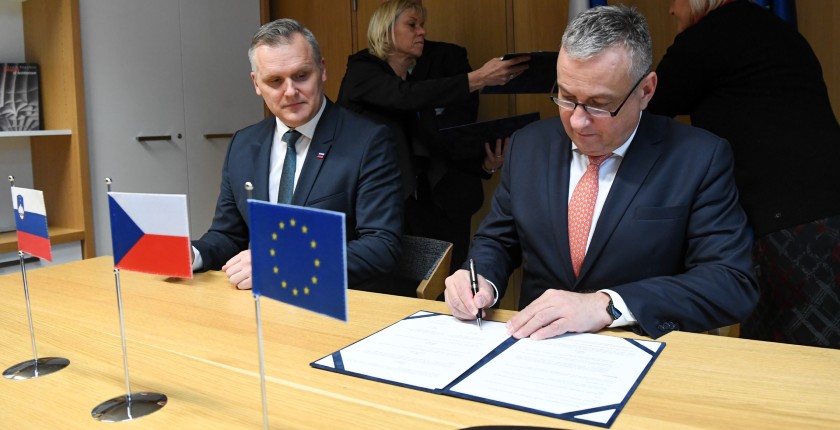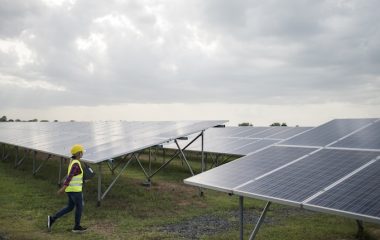
Photo: Bojan Kumer (pictured left) and Jozef Síkela (European Union)
Slovenia bought a share of renewable energy that it lacked to fulfill its national goal for 2021. The Czech Republic won the bid through an EU-wide platform with EUR 2.04 million for 208 GWh.
Slovenia has failed to meet its national goal for renewable energy’s share in gross final consumption, so it used the European Union’s statistical transfer mechanism to make up for the missing part. It was the condition to retain access to the Cohesion Fund in the period 2021-2027, the Ministry of Infrastructure said.
Finland, Estonia, Slovakia and Croatia also responded to the call and sent bids
The country reached 24.6% last year compared to the 25% target. After sending requests to other member states, it received bids from Finland, Estonia, Slovakia, Czechia and Croatia. The Czech Republic’s offer was the most favorable, so the government in Ljubljana selected it for a statistical transfer of 208 GWh, at EUR 9.8 per MWh, translating to EUR 2.04 million in total.
The agreement was signed by Minister of Infrastructure Bojan Kumer and Chech Minister of Industry and Trade Jozef Síkela during the latest meeting of the Council of the European Union. Slovenia’s power market operator Borzen is the cosignatory, as it is tasked with conducting the payment using its funds for renewable energy incentives.
EU member states that miss a green energy target for a calendar year have to secure a statistical transfer within 12 months
The EU platform for statistical transfers is a tool for cooperation in the efforts to achieve collective goals in the green energy sphere. According to the regulation, a government that needs such a deal has 12 months to bring it into force for the previous calendar year.
In addition, one member country can invest in renewable energy production in another EU state through a bilateral agreement and attribute the output to itself. For instance, Scandinavian countries can utilize the option an invest in solar power in southern countries while landlocked countries are able to allocate funds for offshore wind power plants.




















Be the first one to comment on this article.